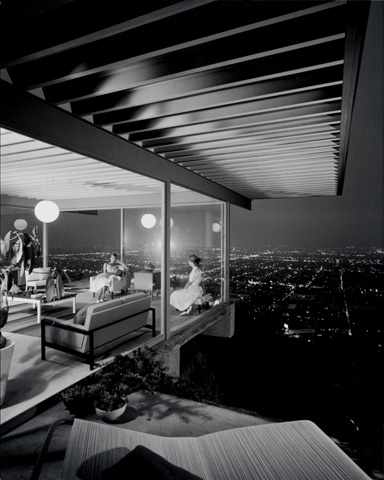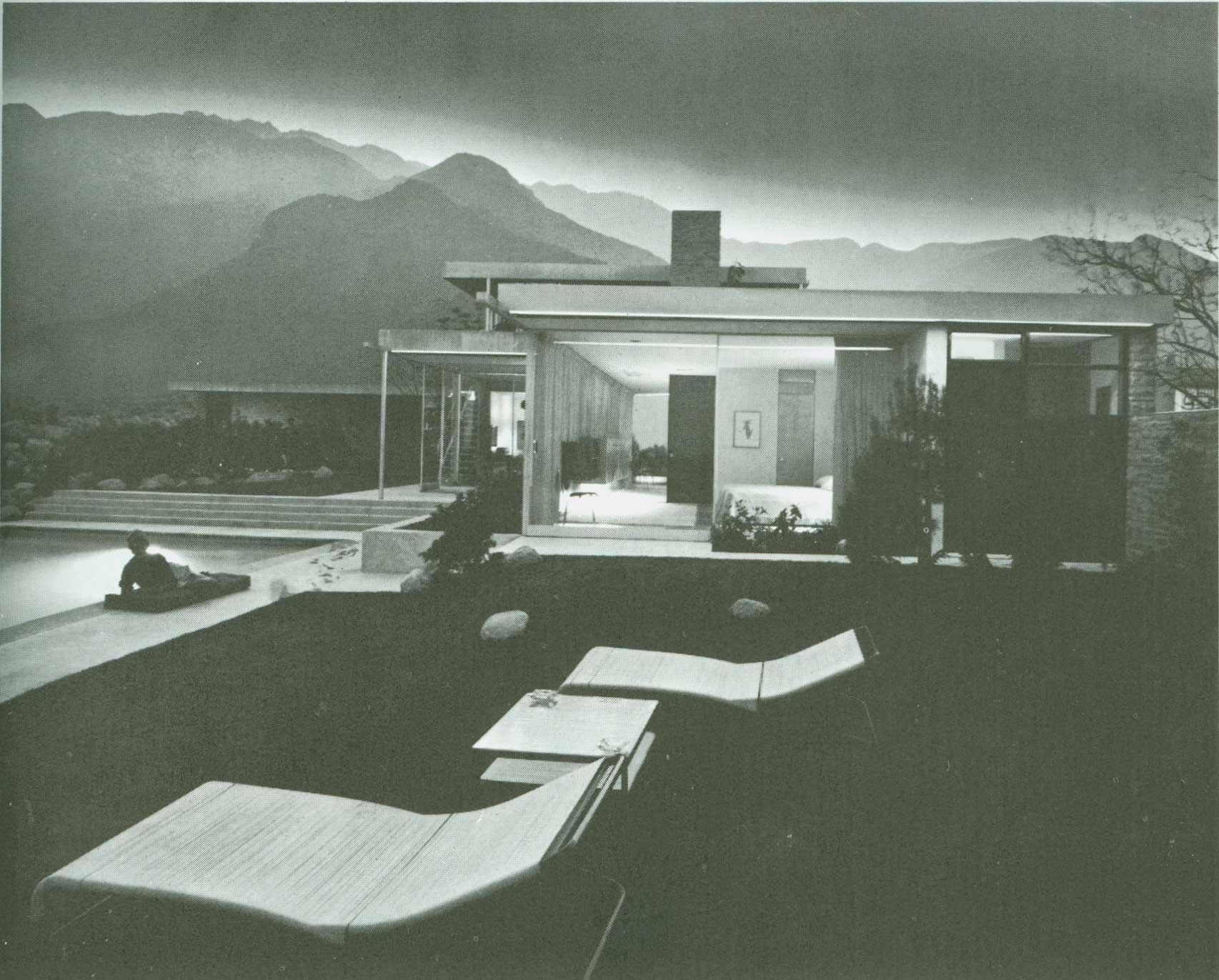
Case Study House, Los Angeles, Architect: Pierre Koenig; Photographer Julius Shulman, 1960. Source: Getty Museum

This post is not specifically about Montgomery County, but it’s about a great film I recently saw that really sets modernism in context. It’s Visual Acoustics, the documentary of a man helped bring modern American design into the forefront: architectural photographer Julius Shulman (1910-2009). Through his spectacular photos, it is said that Shulman defined the way we look at modernism. His photos of works of Richard Neutra, Frank Lloyd Wright, and other modernist designers great and small appeared in architectural journals and books throughout this era.
Shulman’s work was not always credited at the time. My copy of Leonardo Benevolo’s History of Modern Architecture bears witness to this, with great photos of Neutra houses which are not credited (!) but are clearly Shulman’s iconic work, such as this view of the Kaufman House (1946) in California.
The documentary film of Shulman’s work is called Visual Acoustics (2009) and is narrated by Dustin Hoffman. Created before Shulman’s death in 2009, the film has fascinating interviews with Shulman who describes his philosophy for finding the essence of a building and technique of single point perspective.
Visual Acoustics, which was playing on PBS in recent months, is now available on Netflix. I highly recommend it to anyone interested in modern architecture, and it’s been known to change the minds of those who are not yet admirers. Here is a trailer. Go see the film!
Shulman’s photographs and papers are at the Getty Museum which had an exhibit of his work a few years ago. Check out some highlights.
